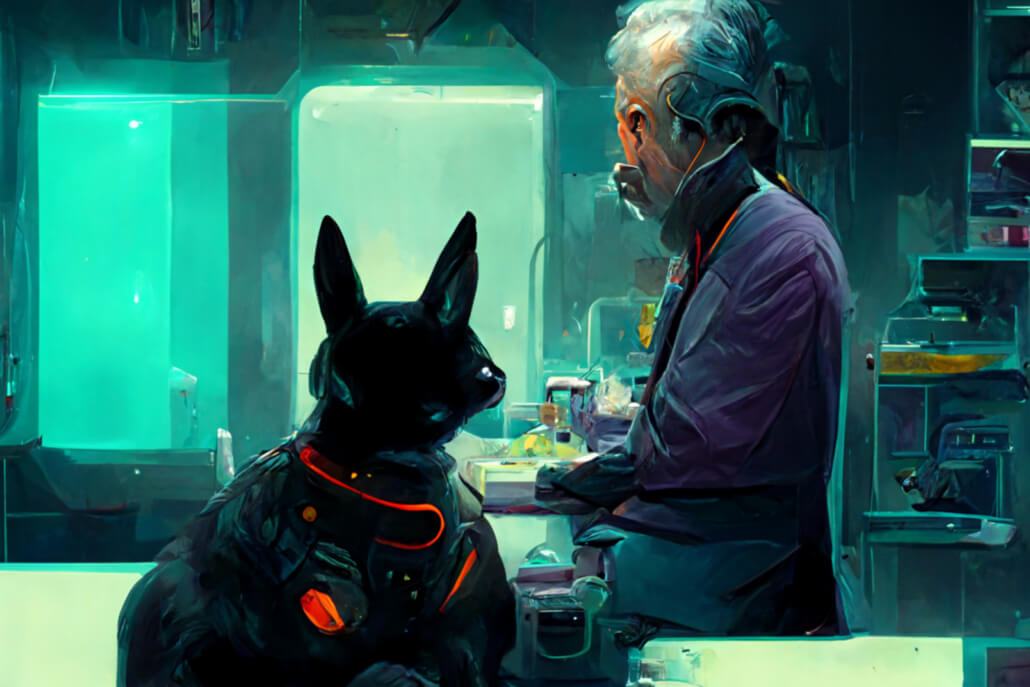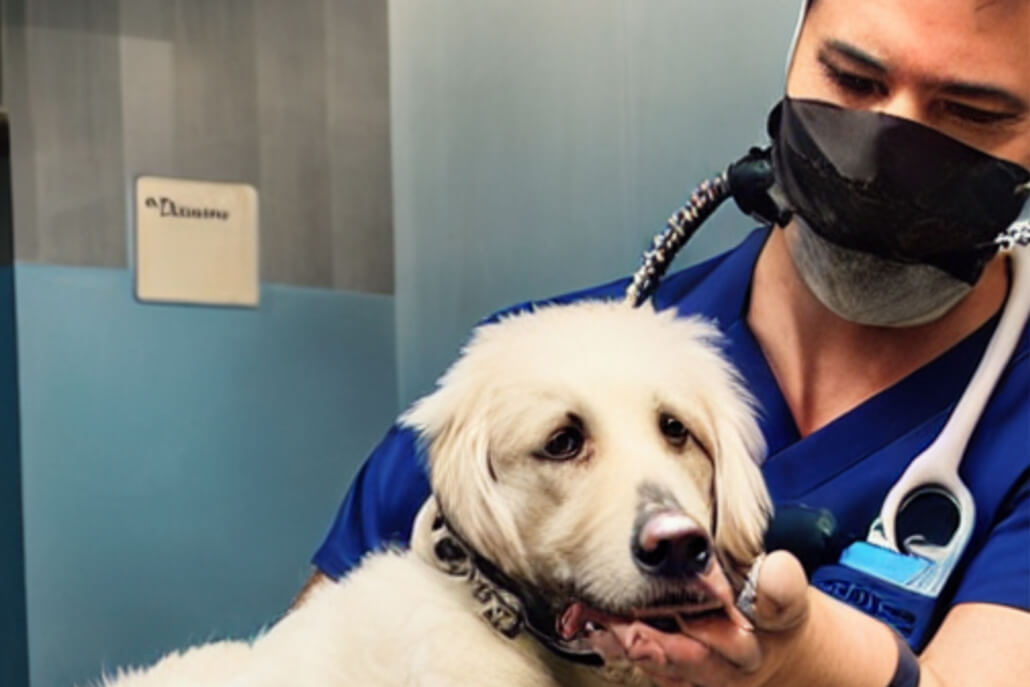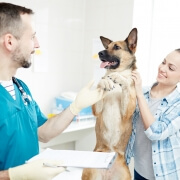How do you future-proof your practice?
If we asked you what superpower you would like to have, you might answer: flying like superman, talking to animals (very useful in your profession), stopping time, or perhaps predicting the future. When answering this question, you might start daydreaming, even though you know that superpowers (usually) are only possible in books and films. But suppose that the last example – predicting the future – is (almost) possible.
To prevent is better than to cure
This is perhaps an obvious place to start, but in this article, we are going to explain why prevention (in the broadest sense of the word) is better than a cure.
As a veterinary practice, you want to prevent pets from getting sick and when necessary, you are the right person to take care of the healing. Prevention, so preventative care, is a task in which you support the pet owner with advice and help, and in this role, you are the expert on the optimal health of pets. You offer advice, information, preventative treatments such as vaccination, or a major intervention such as dental treatment, and diagnostics. Of course, preventative care has a price, but still better (including for the pet) to prevent than to cure.
But, what would happen if a pet owner decides not to take the steps in ‘prevention’ anymore? For example, circumstances (such as the current financial crisis) mean that the owner has to make choices and decisions about what to do.
Looking into the future with a best-case or worst-case scenario
When a change happens on a large scale, it can also have consequences for your practice. We’ve got a fun exercise for you that can help you future-proof your practice and figure out what steps you need to take to get there.
For the example below, we will use elements that are in play now (in 2022). But you can also think of other ‘storylines’, such as the effect of your practice location, changes in regulations, or perhaps change in personnel.
Tip: involve your entire team in this exercise. With a few post-its and an empty wall, you can quickly visualise the scenarios.
- Think of a worst-case scenario for your practice in 3-5 years.
- Think of a best-case scenario for your practice in 3-5 years.
Think big and let your imagination run wild. For both scenarios, work backwards from the outcome in 3-5 steps, considering moments or changes that are needed to go between each stage.
The idea here is that it is easier to create a path if you have a result in mind, and it’s easier to identify moments which have an impact on the outcome. These moments can then be converted into concrete steps, on which you can action.
Example scenarios
Click on the lines below to discover two different example scenarios and the possible outcomes.
Worst-case scenario - an example
In 3 years, 40% of customers will postpone preventative care for their pet.
Example of steps leading to the outcome
- Year 1:
- A situation arises in which many households have to sacrifice income. The media reports that it will only last a few months and that better times are in sight.
- You decide to wait and see, but you do a check-in with suppliers and neighbourhood practices to hear about their experience.
- You notice that pet owners are a bit more cautious but still optimistic.
- The ATF (average transaction fee) per customer is declining slightly.
- Year 2:
- The situation persists, and you see a decline in appointments
- Other practices have started customer campaigns
- You decide to seek help, however, many practices have beaten you to it, and there is a long waiting list for help
- Year 3:
- There has been a downward trend in the number of appointments.
- Customers are more impatient, and appointments take longer because general pet health is poorer.
- It is no longer possible to provide the same service as in year 1.
- Customer satisfaction drops, customers give you bad reviews, and you no longer get new customers.
The steps above are of course just an example; you can think of many more elements or moments per year that can lead to the outcome you had in mind.
Examples of possible consequences
- Unsatisfied costumers
- Lost preventative care, leading to poorer pet health
- Your debtor list grows by the day
- You no longer enjoy your work
- Tension in the workplace and staff loss
- Revenue loss
Best-case scenario - an example
In 3 years, 40% of your customers will be actively involved in the care for their pets.
Example of steps leading to the outcome
- Year 1:
- Demand for preventative care is rising
- Pet insurance popularity is increasing
- Year 2:
- You expand your preventative care calls and notice that they are increasingly acted upon.
- As more animals have pet insurance, you notice your revenue increases and your list of debtors decreases.
- There is a greater demand for preventative dental treatments and this generates a new income stream.
- Year 3:
- The pet owners follow up virtually all calls for preventative care.
- Vet nurses in your practice have a consultation hour for preventative care, and the sale of preventative products is higher than ever.
- You have specialised in dentistry and can help even more pets get and stay healthy.
- Pet owners inherently trust your advice for preventative care.
The steps above are of course just an example; you can think of many more elements or moments per year that can lead to the outcome you had in mind.
Examples of possible outcomes
- Healthier pets
- Staff work well together and are motivated
- Staff can specialise
- Pet owners are satisfied, engaged and loyal
- Growing customer base
- Increased practice revenue
- Investments in equipment and personnel are possible
Team strategy
If you enjoy looking into the future, a method like this is an excellent way to take the first step. Almost playfully, you will discover different moments and elements that can determine the future of your practice. If you perform this exercise together with your entire team, it will increase the team spirit and your employees will be more motivated to commit themselves to this shared vision of the future.
This exercise is called the “Heaven or Hell” method and is often used by companies as part of their business strategy. This Havard Business Review article; Living in the Futures gives some more insight and background about how and why you would like to look in the future. Although the “Heaven or Hell method” is quickly dismissed (possibly due to the type of company referred to in this article), we hope our article inspires you to devise a strategy for your practice.
For example, what changes – small or large – could you implement to be better off in the future? Through the exercises above, have you discovered that you would like to have more time for your patients in the future? If so, have a look at tools in Animana that can help you, for example; automatic reminders, or working with standardised texts; which can save time and increase compliance. If you want to work in a more standardised way, take a look at using custom protocols. And have you ever considered offering a subscription to your customers?
Images from the future*
A final note on the image for this article. Normally, we use photos selected from a stock library, however, for this forward-looking article, the image was generated using the latest AI (artificial intelligence) tools which create an image based on keywords. To get our image, we gave it the terms “Vet visit in the year 3022” and “Walk with a dog in the year 3022“!
* Editoral note — April 2024:
The AI images in this article were generated using the initial AI models from mid-2022. We recognise that using the currently available AI models would produce images of superior quality if we were to recreate them with the same prompts. However, we have deliberately chosen not to update the images to demonstrate how quickly technology can advance.
Let’s talk about what IDEXX software can do for your practice
Complete the form below and we’ll get back to you.











